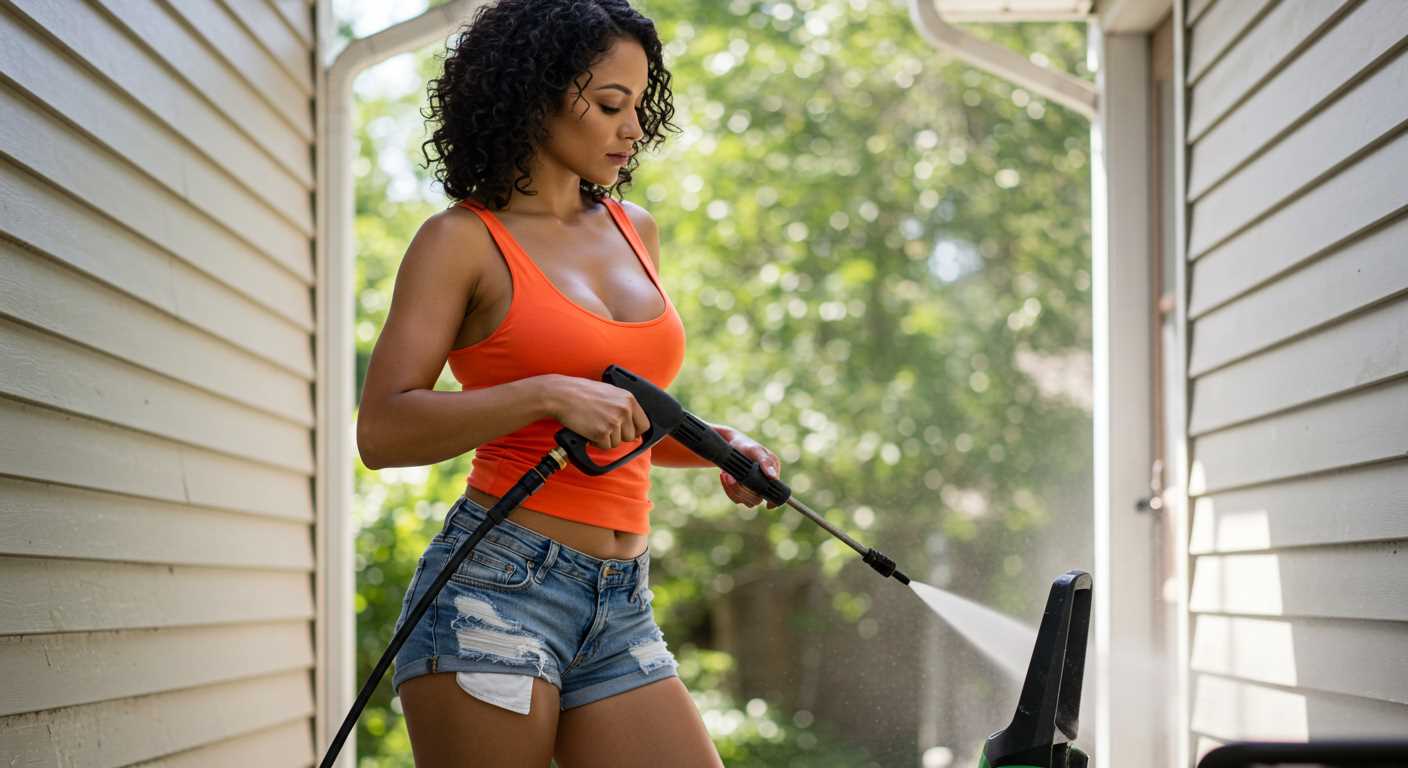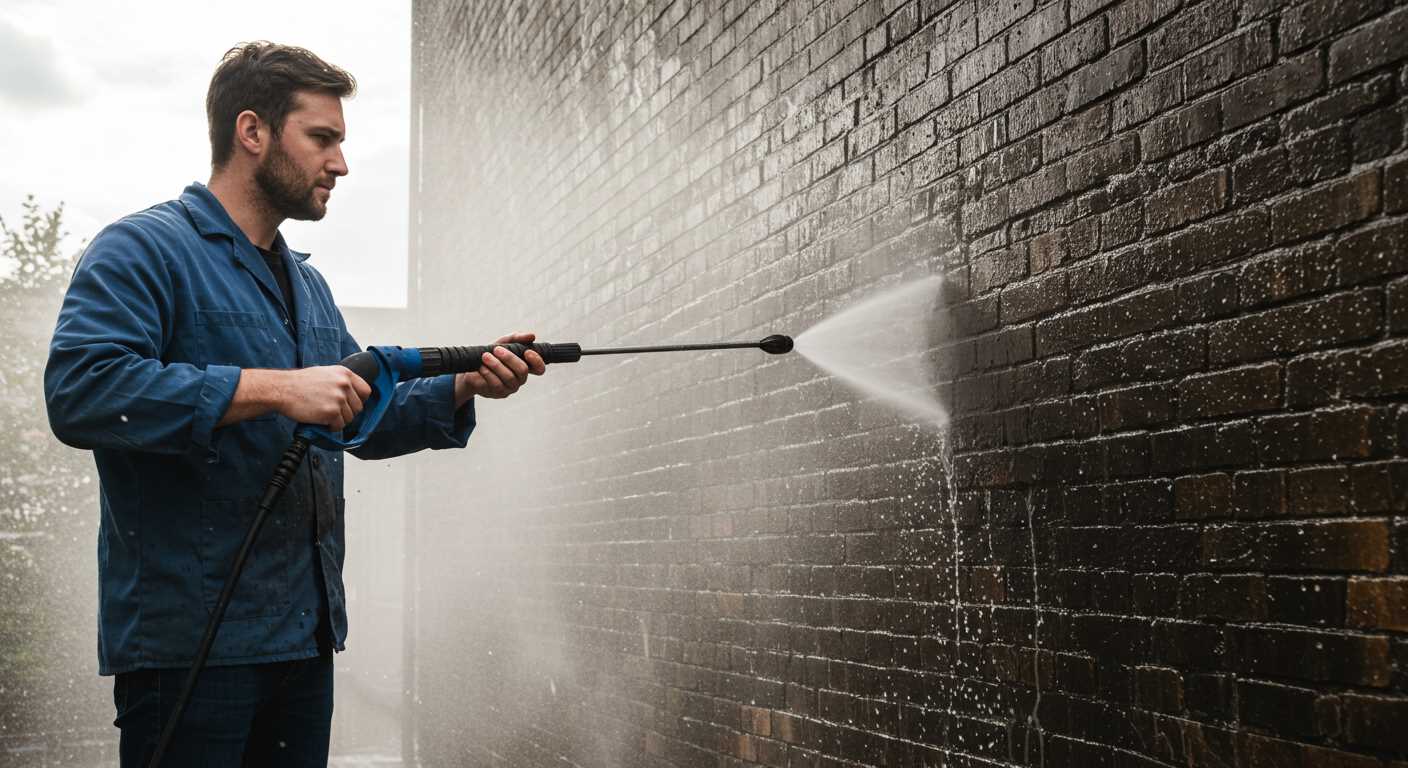



If your cleaning device is unresponsive, first check the power source. Ensure the plug is firmly connected to a functioning outlet. Test the outlet with another device to confirm it’s operational.
Inspect the power cord for any visible damage. Frayed wires or burnt spots can interrupt electricity flow, necessitating replacement. Additionally, verify that the machine’s on/off switch is correctly set; a simple misalignment can prevent activation.
Examine the safety features that might inhibit operation. Some units have built-in thermal overload protection that kicks in when the motor overheats. Allow it to cool down fully before attempting to restart. Furthermore, ensure that the water supply is properly connected and turned on; insufficient water can cause the motor to shut down as a safety measure.
Look into the user manual for any troubleshooting tips specific to your model, as different brands may have unique mechanisms. If all else fails, contacting a service centre may be necessary for more extensive repairs or detailed diagnostics.
Possible Reasons for Your High-Pressure Cleaning Device Not Starting

Check the power source. Ensure the socket is functioning by testing it with another device. A tripped circuit breaker or blown fuse can easily interrupt the flow of electricity.
Examine the cord for any visible damages. Frayed or broken wires may hinder operation. If the cord is in poor condition, replace it immediately.
Inspect the reset button. Many models include this feature to protect from overheating. If the button has tripped, simply pushing it can restore power.
Look into the safety features. Some appliances have built-in mechanisms to prevent operation if water supply is inadequate. Ensure the hose is correctly connected and free from blockages.
Review the user manual for any specific starting procedures. Certain models may require particular sequences or conditions for activation, such as engaging the safety lock or setting the pressure level.
Keep an eye on the thermal overload protection. If your machine has been running continuously, it may have shut down to cool off. Allow it to rest before attempting to restart.
Lastly, consider the age and maintenance of the equipment. Older models may develop wear and tear leading to malfunction. Regular servicing can prolong the lifespan and functionality of your device.
Check the Power Source and Outlet Issues

First, confirm that the power source is functioning correctly. Plug a different device into the same outlet to see if it operates without issues. If the other device works, the source may be sufficient. If not, you might have a problem with the circuit or outlet itself.
Inspect the Cord and Connections
Examine the power cord for any signs of damage, such as fraying or cuts. Ensure that the connections are secure both at the outlet and the equipment. Loose or corroded connections can prevent adequate current flow. If you spot any damage, replacing the cord might be necessary.
Check Circuit Breaker and Fuses
Verify that the circuit breaker has not tripped or any fuses have blown. Locate the electrical panel and inspect for any switches that need resetting or fuses requiring replacement. This simple check can often resolve the issue without further troubleshooting.
Inspect the Power Cord for Damage
Check the power cable thoroughly for any signs of wear or damage. Look for frays, cuts, or exposed wires that could prevent the device from receiving power. If the cord shows visible issues, it’s best to replace it immediately.
Ensure that the connection points at both ends are secure and free from corrosion or debris. Disconnections at the plug or appliance entry can obstruct electrical flow.
If the cord appears intact but you still face issues trying to energise the machine, consider using a multimeter to test continuity along the length of the cord. This step will help identify any internal breaks that aren’t outwardly visible.
For added safety, consult the manufacturer’s guidelines regarding cord specifications when replacing it. Using an incompatible or lower-rated cord can lead to overheating and potential hazards.
Lastly, if the washer operates intermittently, the cord may be damaged internally. In such cases, replacement is the safest option to ensure consistent operation and prevent electrical hazards.
Examine the Reset Button and Circuit Breaker
Check the reset button on your machine. It’s often located near the power cord entry point or on the control panel. If the button has popped out, it indicates a fault in the system that needs to be addressed. Simply pressing it back in may resolve the issue and restore functionality.
Inspect the circuit breaker in your electrical panel too. If the breaker has tripped, it will prevent the appliance from receiving power. Reset the breaker by switching it off and then back on. Ensure the breaker isn’t damaged; if it continues to trip, you may have a serious electrical issue that requires professional help.
Regularly testing these components can prevent unexpected breakdowns. If these checks don’t resolve the problem, further investigation is necessary, such as checking internal connections or motor issues.
Look for Blockages in the Water Supply
Check all connections in the water line for any obstructions. Even small debris can hinder performance significantly. Begin by inspecting the inlet filter, usually located at the water intake. If the filter is clogged, it can prevent proper water flow, leading to shut-down issues.
Inspect Hoses and Fittings
Examine the hoses for twists, bends, or kinks. These can restrict water flow, causing the machinery to falter. Disconnect hoses and inspect for any internal blockages that might not be visible from the outside
Check Water Source
Ensure that the water source is delivering sufficient pressure. Sometimes, the issue may arise if the tap is not fully open or if there are restrictions in the plumbing system. Attach a garden hose directly to the tap and check if water flows freely.
| Component | Potential Issues | Solution |
|---|---|---|
| Inlet Filter | Clogged with dirt | Clean or replace filter |
| Hoses | Kinks or blockages | Straighten hoses or remove blockages |
| Water Source | Insufficient pressure | Ensure tap is fully open |
By taking these steps, you can identify and clear any blockages in the water supply, which may resolve the issue and enable your machine to function smoothly again.
Assess the Safety Features
Check the safety features of the unit. Many models incorporate mechanisms designed to prevent accidental activation. Ensure that the safety lock or trigger is functioning properly and is not obstructed.
Evaluate the High-Pressure Hose and Connections

Inspect the high-pressure hose for any signs of wear or damage. A compromised hose can activate safety protocols that inhibit operation. Ensure all connections are secure to prevent leaks, which can also cause malfunctions.
Review Thermo Protection
.jpg)
Some units include thermal overload protection that shuts down the machine if it overheats. If the motor feels excessively hot, allow it to cool down completely before attempting to restart. Understand that this feature is a protective measure, ensuring longevity and preventing damage.
Regular maintenance checks are vital for all systems. Periodically test that each safety mechanism is working correctly to avoid unintentional issues during use. Following these steps will enhance safety and performance, ensuring a reliable cleaning experience.
Evaluate the Motor and Internal Components
Check the motor for any signs of failure or damage. Listen for unusual noises during operation, such as grinding or humming, which can indicate internal issues. Make sure to verify that the motor is securely fastened and has no loose connections.
Inspect the internal components, such as wiring and circuit boards, for any signs of wear, corrosion, or burnt sections. Look out for:
- Frayed or disconnected wires.
- Visible burn marks on the circuit board.
- Any loose connections that may disrupt power flow.
Perform continuity tests on the wires leading to the motor to ensure they are conducting electricity properly. A multimeter can help you assess the continuity and identify problematic areas.
If the motor has carbon brushes, examine their condition. Worn or damaged brushes can lead to inadequate contact and power issues. Replace them if they appear worn down.
Lastly, check the pump assembly. If the pump is seized or malfunctioning, it can prevent the motor from operating correctly. Ensure all moving parts are lubricated and functional.
Consult the User Manual for Troubleshooting Steps

Refer to the user manual for precise troubleshooting procedures tailored to your model. Familiarising yourself with the manual can save time and prevent unnecessary frustration.
Key areas to check in the manual include:
- Power Connection: Look for specific instructions on ensuring a secure power connection.
- Start Sequence: Identify the correct steps to initiate operation; some models require specific actions to engage.
- Error Codes: Many devices display error codes or indicators that can direct you to the issue.
- Maintenance Guidelines: Follow maintenance tips to avoid issues; regular upkeep can enhance longevity and performance.
- Safety Features: Understanding the built-in safety mechanisms can prevent misuse and highlight why the device might not activate.
Each model may have unique features or requirements that can affect functionality, so thorough review of your manual can enhance troubleshooting efforts.







